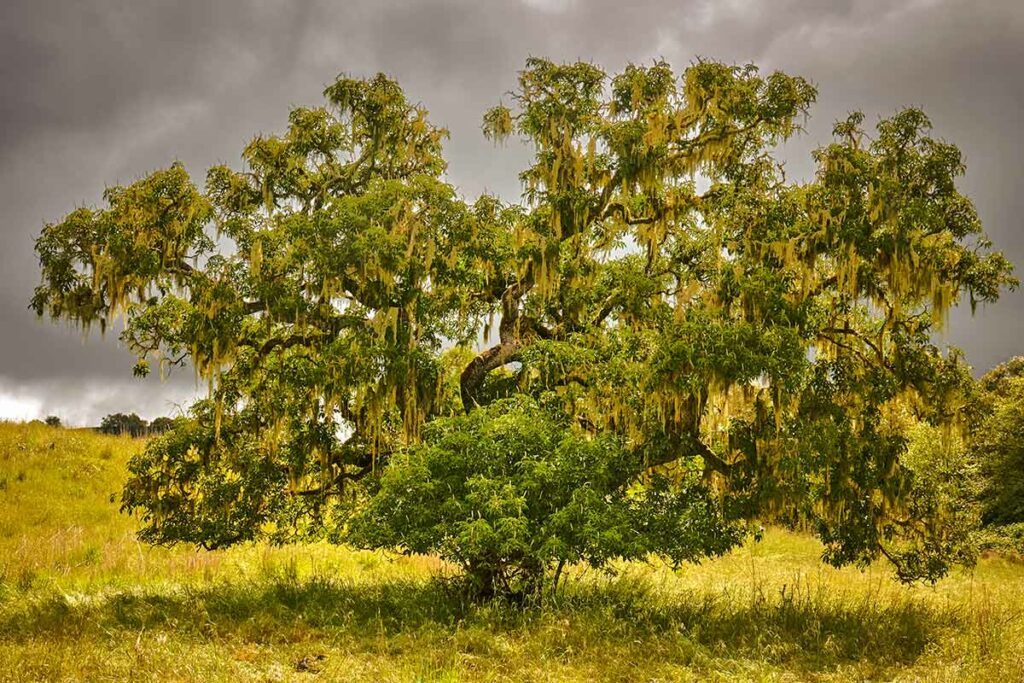5 Drought Tolerant (and Fire-resistant!) Trees Perfect for Wine Country Yards
When planting trees during a drought, confining the selections to drought-tolerant trees can help conserve water. Better still, especially in Sonoma County, planting trees that are fire resistant will provide additional protection against the wildfires that have become commonplace in this parched, drought-affected region.
What makes a tree drought tolerant?
Tolerating drought, when it comes to trees, relies heavily on its root system, as well as how efficiently it accesses available water, and how much water it requires. Species that are native to the area have effectively adapted to the local climate, giving them a head start.
In addition, trees that are the first to grow in areas that have been disturbed or damaged, have proven that they require fewer resources, such as water or good soil.
Specific features found in most drought-tolerant trees include:
- Extensive root systems
- Smaller and waxy leaves
- Large canopies with multi-layered, deep, upright crowns
All of the five trees listed herein are drought tolerant and fire resistant.
Drought Tolerant Trees for Larger Spaces
These drought-tolerant trees are perfect for wine country yards where they have room to grow. Here are some larger varieties to consider for your yard or property.
Western Redbud
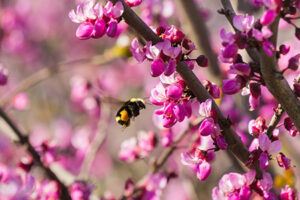
The Western Redbud, a California native, grows up to 20 feet and blooms with beautiful purple flowers in early spring. The beans that follow are a favorite for hummingbirds and other creatures. It can also be trained to grow as more of a shrub if desired.
California Buckeye
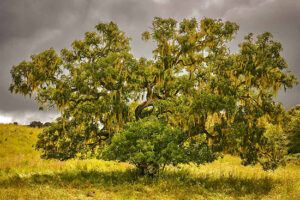
The California Buckeye, as the name suggests, is another California native, preferring its coastal ranges and the foothills of the Sierra Nevada. Spring brings cream-colored blooms with a pleasant fragrance. Though this tree, which can reach up to 39 feet, is drought-tolerant, it prefers being watered. Note that the fruit, the buckeyes, are toxic.
California Sycamore
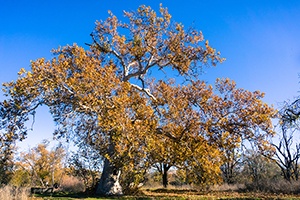
For a tree that’s taller still, consider the California Sycamore, which can grow up to 100 feet and provide abundant shade, with a 40- to 70-foot canopy, in the spring and summer months. Like the California Buckeye, it’s drought and fire-resistant but prefers a bit of water. Beware of its aggressive roots, which can push up walkways and driveways.
Smaller Drought Tolerant Trees
These trees walk the fine line between tree and shrub, reaching no more than 25-30 feet, and can enhance your yard with color much of the year, in addition to adding shade, privacy, and a habitat for butterflies and birds.
Weeping Bottlebrush
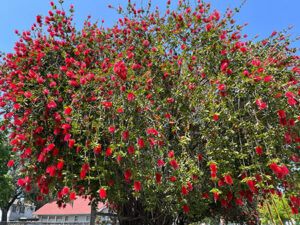
This tropical tree fills out with dangling red blossoms from spring to late summer that looks, not surprisingly, like a long-handled brush used to clean bottles. These multi-trunked trees are hummingbird magnets and great as privacy hedges.
Golden Ball Lead Tree
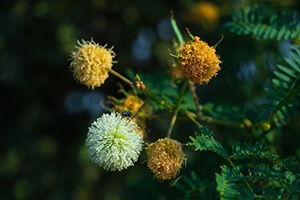
The Golden Ball Lead Tree features gold-colored, round blossoms. These blooms last through October, contrasting with its bright green leaves. Heavy rains enhance their brilliance.
Planting the Best Tree for You and Your Yard
When deciding on the best drought-tolerant, fire-resistant tree for your yard, read our previous blog post to learn four tips for landscaping with trees, including how they fit with existing landscape elements. Remember that newly planted trees need extra care until they become established. Also, consider the long-term care each variety will require.
Watering Your Newly-planted Trees During the Drought
Every tree is a little different, but for the most part, they all have the same watering needs. In general, young trees should be watered every 2-3 days, allowing each plant to receive 10-15 gallons every week. However, larger trees (those with over 2-inch trunk diameter at chest height) need 8-10 gallons of water per inch of trunk diameter.
If you’re not sure if you’re under or overwatering, the soil will tell you. If the soil is wet at four-six inches deep, there is no need to water yet. However, if it feels barely damp or dry, it is time to water it again.
Schedule a Tree Health Inspection at the First Sign of Drought Stress

Whatever variety you choose, your drought tolerant tree still needs a fair amount of water until it’s established, and should be monitored closely. Scheduling an annual health inspection for all of your trees will ensure any problems are detected while they can still be treated.
If your trees are showing signs of drought stress, contact a certified arborist before your scheduled inspection. Vintage Tree Care is here to help support the longevity and beauty of your trees with personalized tree care and services. Contact us for a professional health inspection today by calling (707) 495-4686 or contacting us online.


